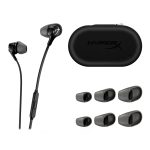Local businesses striving for visibility in specific neighborhoods or communities face a unique challenge: how to craft content that not only ranks well but also resonates deeply with targeted audiences. While broad local SEO strategies provide a foundation, micro-targeted content takes this to the next level by honing in on hyper-specific queries, neighborhoods, and community nuances. In this comprehensive guide, we will dissect the technical, strategic, and practical aspects of optimizing micro-targeted content for local SEO success, providing actionable steps rooted in expert-level insights.
Table of Contents
- Conducting Precise Keyword Research for Micro-Targeted Content
- Crafting Hyper-Localized Content That Resonates with the Community
- Structuring Micro-Targeted Content for Maximum SEO Impact
- Technical Implementation of Micro-Targeted Content
- Local Link Building Strategies for Micro-Targeted Content
- Monitoring, Measuring, and Refining Micro-Targeted Content Performance
- Case Study: Implementing a Step-by-Step Micro-Targeted Content Strategy in a Local Business
- Final Reinforcement: How Micro-Targeted Content Drives Local SEO Success and Broader Visibility
1. Conducting Precise Keyword Research for Micro-Targeted Content
a) Identifying Local Search Queries with High Conversion Potential
Begin by analyzing your existing customer inquiries, service requests, and online reviews to uncover common language and specific questions posed by local users. Use tools like Google Search Console and Google My Business Insights to identify queries that generate calls, directions, or visits. For example, if your bakery in Brooklyn notices frequent searches for “gluten-free cupcakes in Williamsburg,” prioritize this query due to its high conversion likelihood.
b) Utilizing Geo-Modifiers Effectively in Keyword Lists
Geo-modifiers are essential for hyper-local targeting. Instead of broad terms like “plumber,” incorporate neighborhood or landmark references such as “Brooklyn Heights emergency plumber” or “near Brooklyn Bridge.” Use variations to capture different user intents, including street names, districts, or well-known local features. Maintain a balanced mix to avoid over-optimization and ensure natural integration.
c) Leveraging Local Keyword Tools and Data Sources
| Tool | Usage & Tips |
|---|---|
| Google Trends | Identify trending local search terms over time; filter by geographic area. |
| Ubersuggest | Generate keyword ideas, analyze search volume, and discover local competitors’ keywords. |
| Google Keyword Planner | Use for detailed search volume data; set location filters to target specific neighborhoods. |
d) Prioritizing Long-Tail Local Keywords
Focus on long-tail keywords that specify neighborhoods, services, or unique community features. Examples include “affordable dental clinic in Astoria” or “organic grocery store near Central Park.” These keywords tend to have lower competition and higher conversion rates, especially when combined with local intent signals. Use keyword clustering to identify clusters around specific neighborhoods or services and develop dedicated content for each.
2. Crafting Hyper-Localized Content That Resonates with the Community
a) Incorporating Neighborhood and Landmark References Naturally
Embed neighborhood names, landmarks, and local colloquialisms seamlessly within your content. For example, instead of a generic “best pizza,” write “authentic New York-style pizza in the East Village.” To do this effectively, create a repository of local landmarks, street names, and colloquialisms, then weave them into your service descriptions, blog posts, and FAQs. A practical step is to audit existing content and enrich it with these references, avoiding keyword stuffing by maintaining natural language flow.
b) Using Local Language, Dialects, and Cultural Nuances
Capture the community’s voice by incorporating local slang, dialects, and cultural references. For instance, a coffee shop in Boston might mention “chowda” or include phrases like “wicked good.” Conduct informal surveys or analyze local social media groups to understand vernacular preferences. This approach not only enhances authenticity but also aligns your content with local user search behavior, increasing relevance and engagement.
c) Creating Content Around Local Events, News, and Trends
Monitor local event calendars, news outlets, and community boards to identify trending topics. For example, a landscaping business could publish a guide titled “Preparing Your Garden for the Boston Cherry Blossom Festival.” Incorporate timely keywords and local hashtags in your blog posts and social media updates. Use tools like Eventbrite or local Facebook groups to identify upcoming events and craft content that taps into community enthusiasm.
d) Examples of Effective Hyper-Localized Blog Posts and Service Pages
- Post Example: “Top 5 Hidden Gems for Coffee in Downtown Dallas“
- Service Page: “Emergency Plumbing Services in West End Neighborhood“
- Blog Strategy: Regular updates on community events, local stories, and neighborhood spotlights.
3. Structuring Micro-Targeted Content for Maximum SEO Impact
a) Optimizing Title Tags and Meta Descriptions with Local Keywords
Craft unique, localized title tags that include primary local keywords and neighborhood references. For example, “Best HVAC Repair in Chelsea, Manhattan” rather than generic titles. Meta descriptions should be concise, compelling, and include secondary local keywords, with a call-to-action tailored to the neighborhood, such as “Schedule your free consultation today in Brooklyn Heights!” Ensure each tag and description is unique to prevent duplicate content issues.
b) Using Schema Markup to Highlight Local Business Details
Implement <script type="application/ld+json"> structured data snippets to mark up your local business info. For example, include LocalBusiness schema with properties like name, address, telephone, openingHours, and areaServed. For service-specific pages, embed Service schema and Review schema to enhance rich snippets. Use Google’s Structured Data Testing Tool regularly to validate your code and avoid errors.
c) Embedding Google Maps and Local Citations Within Content
Embed an interactive Google Map centered on your target neighborhood using the iframe code. Complement this with local citations—mentions of your business on directories like Yelp, Bing Places, and local Chamber of Commerce sites. Use schema markup for these citations to reinforce local relevance. Regularly update citations to correct inconsistencies and remove duplicates.
d) Implementing Structured Data for Events, Offers, and Reviews
Use structured data types like Event, Offer, and Review schema to highlight local promotions, upcoming community events, or customer testimonials. For example, if hosting a local workshop, mark it up with Event schema specifying date, location, and description. This enhances your chances of appearing in rich snippets and local packs.
4. Technical Implementation of Micro-Targeted Content
a) Ensuring Mobile-First Optimization for Local Search Accessibility
Design all pages with a responsive layout, prioritizing fast load times and touch-friendly elements. Use Google’s PageSpeed Insights to identify and fix mobile performance issues. Implement lazy loading for images, minify CSS/JS, and leverage browser caching. Mobile usability is a critical ranking factor for local search, especially for “near me” queries.
b) Creating Dedicated Landing Pages for Each Neighborhood or Area
Develop separate, optimized landing pages for each targeted area, e.g., /brooklyn/neighborhood1 and /queens/neighborhood2. Tailor content, images, and keywords specifically for each locale. Use consistent NAP (Name, Address, Phone Number) information and local testimonials. These pages should load quickly, contain localized schema markup, and include internal links to other relevant pages.
c) Implementing URL Structures that Reflect Local Hierarchies
Use clear, hierarchical URL paths that mirror local geography, such as /city/neighborhood/service. This not only improves user experience but also signals search engines about the content’s relevance. Avoid generic URLs; instead, embed the neighborhood or landmark names explicitly.
d) Managing Duplicate Content Risks with Canonical Tags and Unique Local Content
When creating multiple local pages, ensure each has unique content to prevent duplicate content penalties. Use canonical tags to specify the preferred version if similar content exists across pages. Regularly audit your site with tools like Screaming Frog to identify and rectify duplicate issues, and enrich each page with local testimonials, images, and community references.
5. Local Link Building Strategies for Micro-Targeted Content
a) Engaging with Local Influencers and Community Boards
Identify local bloggers, social media personalities, and community groups to collaborate on content or sponsorships. Offer guest posts, interviews, or event sponsorships with backlinks to your local pages. Participation in community forums and neighborhood Facebook groups can also generate organic mentions and citations.
b) Securing Backlinks from Local News Outlets and Business Associations
Build relationships with local newspapers, magazines, and business directories. Pitch stories about your community involvement or unique local services. Submit press releases and participate in local awards or events to earn backlinks from authoritative local sources.
c) Creating Local Resource Guides and Collaborations
Develop comprehensive guides such as “Best Pet Services in Downtown LA” or “Top Family-Friendly Restaurants in Austin.” Partner with local businesses to co-create content, exchange backlinks, and amplify authority. These resource pages naturally attract backlinks and local citations.
d) Avoiding Common Link Building Mistakes
<p style=”font-size: 1.1em; line-height: 1.




